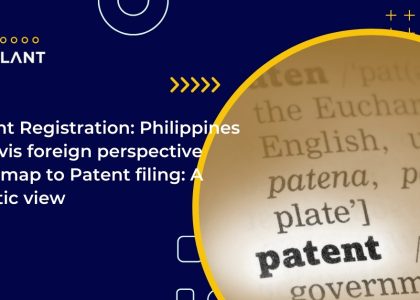

Requirements To Apply For A Patent And How Much Is The Cost To Apply Here In The Philippines
When you develop an idea, new technology, or breakthrough through your work or resources, it is critical to safeguard it. If such intellectual property is not protected, others may copy or exploit it. The most common type of protection is to file for a patent with the Philippine Intellectual Property Office’s Bureau of Patents (IPO).
The Intellectual Property Code of the Philippines, Republic Act No. 8293, defines a patentable invention as “any technological solution to a problem in any sector of human activity that is novel, involves an inventive step, and is industrially relevant.” It might be a product, a technique, or an improvement on any of the aforementioned.”
When the IPO grants a patent, it provides the owner the exclusive right to utilize the invention and prohibits anyone from using, selling, or manufacturing the product for the duration of the patent. Once issued, a patent is valid for twenty (20) years.
It is both simple and difficult to apply for a patent with the IPO. It’s simple since the procedure is uncomplicated. Difficult because the criteria may be technical and necessitate specific knowledge or experience.
Before you file for a patent, you must first evaluate whether your product is patentable. According to the IP Code, your product must provide a technological solution to a problem. Patented innovations include bullpens, TVs, band-aids, and so on.
Furthermore, an innovation must fulfill the following criteria:
- It must be novel or brand-new (it must not have been made or used before).
- It must include a creative step (it must not be obvious to a person of ordinary skill in the field concerned).
- It must also be industrially applicable (it must be susceptible to use in some way).
Not all innovations, however, can be patented. The following are examples of what cannot be patented under the IP Code:
- Discoveries, scientific theories, and mathematical methods; Schemes, rules, and methods of performing mental acts, playing games or doing business, and programs for computers;
- Methods for treatment of the human or animal body by surgery or therapy and diagnostic methods practiced on the human or animal body. This provision shall not apply to products and compositions for use in any of these methods;
- Plant varieties or animal breeds or essentially biological processes for the production of plants or animals. This provision shall not apply to micro-organisms and non-biological and microbiological processes.
- Provisions under this subsection shall not preclude Congress to consider the enactment of a law providing sui generis protection of plant varieties and animal breeds and a system of community intellectual rights protection:
- Aesthetic creations; and
- Anything contrary to public order or morality.
Now, if your product meets the elements of innovation and is not forbidden in the preceding list, you must compile the relevant documentation to be presented with the IPO. They are as follows:
- Request for the Grant of Patent (this is a form provided by the IPO)
- Description of the Invention (Specifications and Claims)
- Formal Drawings
- Filing Fee (Filing Fee=P1,800; Each sheet in excess of 30= P15 per sheet; Each claim in excess of 5= P150 per claim; Request for Substantive Examination= P1,750)
The abstract, the background of the invention, a summary of the invention, a description of the drawings, a full explanation of the invention, and claims must all be included in the description of the invention. It should be stressed that the claims are crucial since they define the scope of the invention and provide protection for it.
Following the filing of the application with the IPO, it will be subjected to a formality assessment, search, and categorization of the sector of technology to which the invention pertains.
It will be published in the IPO e-gazette after 18 months from the filing date. This gives other parties the chance to provide written observations on the patentability of the invention, to which the applicant can respond.
In addition, within six (6) months of the date of publication, the applicant must request a substantive examination. If no such request is made, the application is deemed withdrawn. Following that, the application will be examined by the Patent Examiner, who will determine its patentability. If the Patent Examiner denies the application, he must tell the applicant, who then has the opportunity to defend or modify the application.
If the Patent Examiner grants the application, he must render a decision. A patent grant must be published in the IPO Gazette within six (6) months. Letters Patent will be provided as proof of patent award.
This is the procedure for obtaining a Philippine patent.
How long will it take to register a patent and what are the standard costs?
In the Philippines, it takes an average of two to three years from the filing date of the application to register a patent. This includes the 18-month delay from the filing date or priority date before the application is published electronically in the e-Gazette.
The basic government filing charge of $90.90, the excess claim fee of $7.58 per claim, and the substantive examination fee of $88.38 are the normal fees for a patent application. A typical professional cost is $400.00. For more details, you can check on government sites. (https://www.ipophil.gov.ph/services/schedule-of-fees/patents/)








